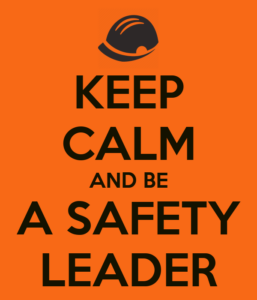November Safety Tip
How To Be A Great Safety Leader
Safety leadership is more than overseeing the general day-to-day of your organization’s safety program. Leading is about influencing employees and colleagues to meet the goals of your organization and safely fulfill their roles. When safety is overlooked or not taken seriously enough, it can lead to disastrous effects. It is even more important in manufacturing industries to have strong safety leadership as the jobs are inherently more dangerous. Demonstrating the following characteristics as a safety leader will help you stand out and keep your team members safe.
- Lead by example
Leading by example is extremely important. This trait ensures your employees know exactly what is expected of them. Whether you are in the office, a training session, or on a work site, demonstrating proper behavior is imperative. Employees will be less likely to develop bad habits or find shortcuts around the rules and procedures when leadership sets the tone and models exemplary behavior. Safety leaders should strive to have their employees or colleagues mimic the same focus and action. “Do as I say, not as I do” is not how a great safety leader operates.
- Keep employees accountable
Accountability is about taking the initiative and delivering on an outcome. It can be difficult to keep employees accountable for their actions and promises as the intent can come across as scolding or lecturing. Employees need to adhere to safety practices and understand they are there to protect workers, not control them. By setting out clear expectations and consequences, employees are more likely to follow the rules and promote a safe culture.
- Create leaders at every level
Being a safety leader does not only pertain to those with senior management or executive titles. As mentioned, safety leaders are those who demonstrate by example and influence the people around them to do the right thing. There are many ways to start motivating those around you. Publicly recognizing good behavior, mentoring new hires, and setting safety goals for the entire organization are all great examples of how employees can demonstrate “leadership” qualities.
- Continuous learning
Successful companies always have room to improve, especially when new regulations and technology are introduced all the time. Companies that constantly monitor their performance can adapt their business or safety strategy based on successes and shortcomings. Great safety leaders know that leadership and development are continuous, and learning is crucial to ongoing success.
- Be positive
Negativity can spread fast throughout an organization and can engrain itself into the culture. If leaders are negative about safety rules or practices, it can foster negative safety attitudes in other employees. As a leader, it is your job to influence people in the right direction and put a positive spin on all conversations around safety. Not only will this instill confidence in your employees about policies and procedures, but it will also allow your workers to view safety in a positive light rather than as a chore or nuisance.
- Respond to feedback quickly
Feedback is beneficial for generating better performance and results for both employees and employers. As an employee, you can adjust behaviors to better your performance within the organization and use the skills to become a better leader for other staff or new hires. However, as an employer, receiving feedback and integrating it quickly into your leadership strategies can help you improve and show employees that their feedback is valuable and respected.
- Strong communication
A great safety leader finds the balance between being assertive and pleasant. When delivering news or directions, it is important to be firm while being kind. As a leader, typically you are aware of sensitive or confidential information. Exercising discretion is important to effective communication so that you do not upset others or release private information to other co-workers.
- Take responsibility
When something goes wrong, strong leaders step up and assume responsibility. As a person who is leading a team, you are responsible for both the successes and difficulties your team will go through. Although it may feel natural to get defensive and shift the blame to others, as a leader it is important to be assertive, take the responsibility, and make a proactive plan to avoid future mishaps.
- Keep up to date on regulations
Staying well-informed on new safety regulations, procedures, or incident trends in your industry will help you be an effective and safe leader for your team. Communicate insights to your team and find innovative ways to apply the knowledge within your organization.
- Avoid negativity
Although it is common to vent about work procedures or disruptive colleagues, it fosters a negative work environment. Finding a proactive solution to the problem and keeping negative comments to yourself is the most effective way to avoid negativity in the workplace. Having positive conversations about safety rules will not only help you decrease negativity but will hopefully create a safety culture within your organization.
Safety is everybody’s job. Knowing and practicing these 10 characteristics, you will be on your way to being an effective safety leader. Strong safety leadership not only ensures your employees improve their performance, but it will allow them to be safer and return home to their families each night.

